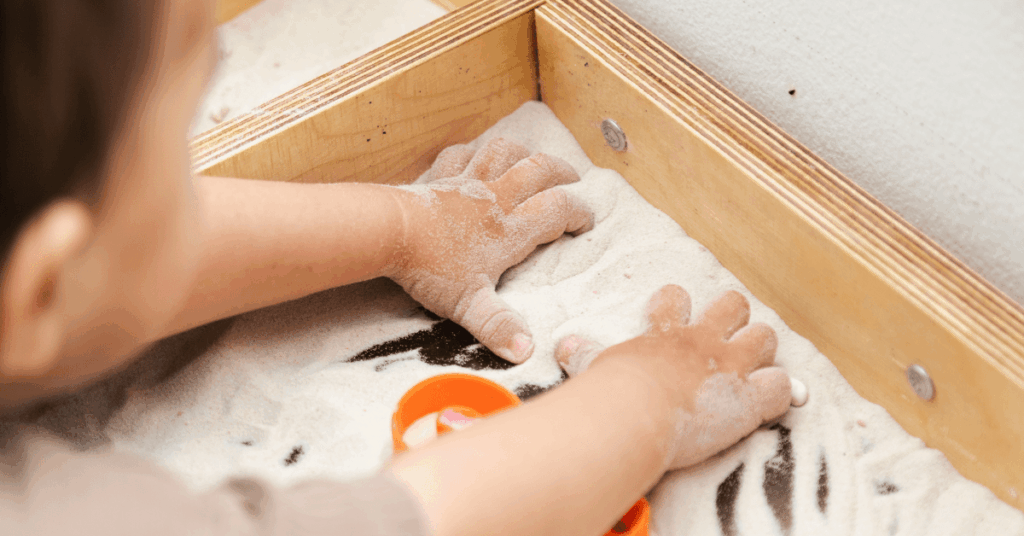Meltdowns versus tantrums
By Dr. Nicole Grant
What is the difference between a tantrum and a meltdown?
You might be thinking, ‘Of course I know the difference! Only kids with autism have meltdowns. Every other child screaming in the shopping centre is just throwing a tantrum… Right?!’
Wrong.
Children with autism are certainly more prone to meltdowns, however every child (and adult for that matter) can experience a meltdown if the conditions are right (or wrong!)
Whether your child has an autism diagnosis or not, it’s still important to know the difference between a tantrum and a meltdown, so you know how to respond accordingly.

Meltdowns
A meltdown is usually caused by a build-up of sensory stimulus that becomes so overwhelming, it’s hard to stay calm and in control.
Children with autism and sensory processing disorders often become overwhelmed by sensory input (e.g. bright lights, loud noises, crowds etc.) and will experience a meltdown when they are no longer able to tolerate the amount or type of input they are receiving.
A meltdown can also occur when emotions and feelings become overwhelming.
This can happen to anyone, although it is more likely to occur if you have autism or other neurodevelopmental disorders.
If your child experiences frequent meltdowns, without any apparent cause, it’s best to consult with your child’s general practitioner or paediatrician.
Tantrums
A tantrum is usually caused by a child not getting what they want, being asked to do something they don’t want to do or having something done to them that they are not happy about.
Younger kids that struggle to find the words to express how they feel are more likely to have a tantrum.
It’s a very effective (although undesirable) way to let others know something is not right in their world!

An essential difference between a meltdown and a tantrum is that a meltdown is quite uncontrollable.
There is little a person can do when in full meltdown mode, so the strategies to be used are generally around preventing them where possible and providing a safe place to desensitise when the need arises.
A tantrum however, is deliberate and somewhat controlled.
A child will very rarely throw a tantrum if an audience is not present, whereas a meltdown will occur regardless of whether or not there are others around.
How can a tantrum be stopped?
A tantrum can be managed in a few different ways:
- By ignoring your child until they realise that you are not giving in,
- Giving them what they want (although not recommended!), or
- Redirecting/ distracting them.
1 and 3 are the better choices.
It’s always important to let a child know that you have heard and understood them, but that a tantrum is not the way to express their wants and needs.
As children learn to find the words they need, and self-manage their anger, frustration, and other challenging emotions, they should tantrum less.
Parenting young children requires lots of patience!
Detecting a meltdown
It’s not always easy to anticipate a meltdown, but your child will have specific triggers and usually show signs when they are reaching their point of tolerance.
Some children with autism will exhibit stimming (stimulatory) behaviours to try to over-ride or screen out the offending stimulus.
This may look like rocking, flapping hands, humming or singing, covering ears, pinching or other self-harm, and other repetitive behaviours.
These are not usually signs of an impending tantrum. Stimming does not always mean a meltdown is looming either, so you will need to learn to read your child.
How can I manage a meltdown?
A child experiencing a meltdown will generally not benefit from the same behaviour management strategies that you use with tantrums.
They instead need to be given time to recover from whatever sensory stimulus has affected them.
If you have a child that is prone to meltdowns, try and work out their triggers.
Over time you may learn to anticipate a meltdown and avoid it before it happens.
Here are some things that may help your child to avoid a meltdown:
- Bright lights and screen glare? Try sunglasses, cap, screen filters, dimming the brightness on screens, monitors and devices, or retreat to a darkened room.
- Too much noise? Try listening to music through ear phones, ear plugs, pull down beanie over ears, wear a head band that covers the ears, or retreat to a quiet place.
- Too many people and lack of personal space? Try having a tent or tepee nearby to hide in, spend time in a darkened room, wear Emotichew to let people know you’re not ready to talk, or wear a hoodie to create a physical barrier.
- Too much energy and excitement/over stimulated? Try jumping on a trampoline, do heavy work activities like hanging off monkey bars or wall push-ups, or chewy jewellery to chew on.









